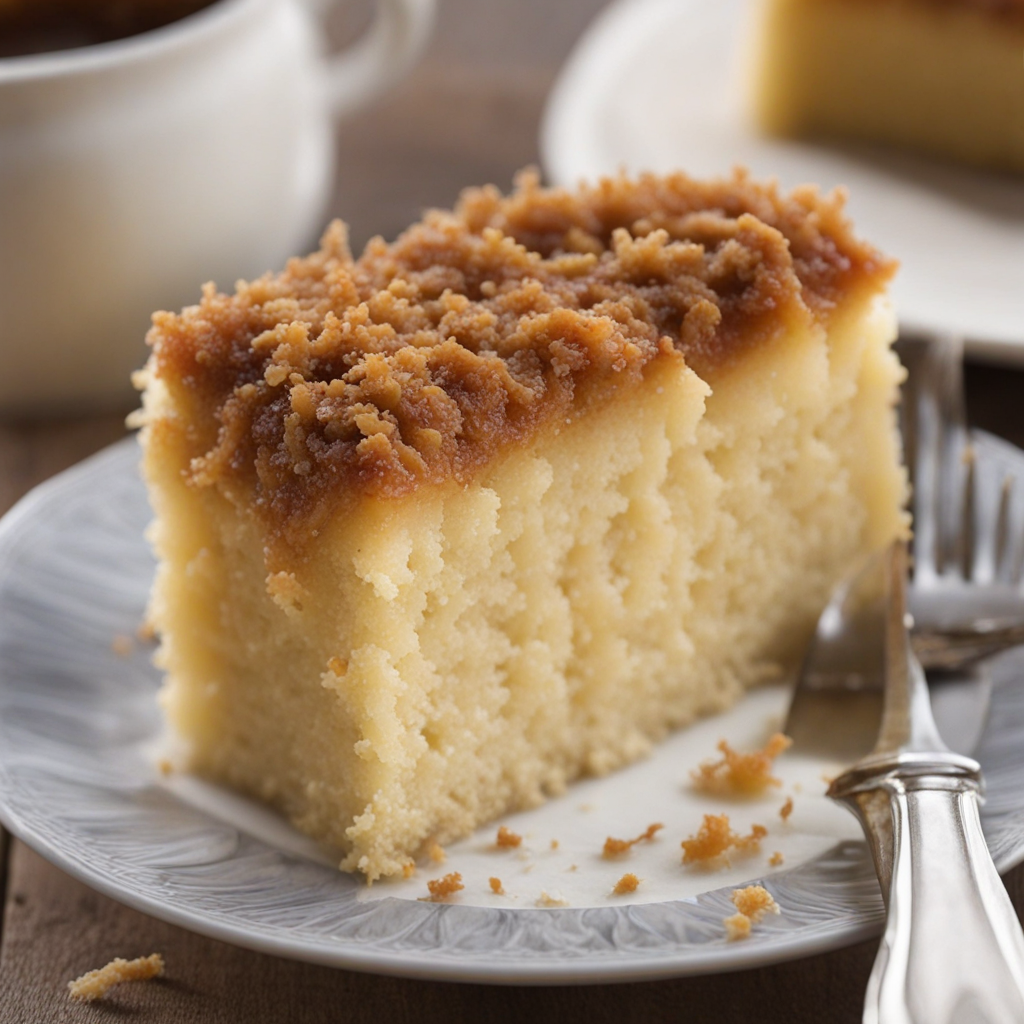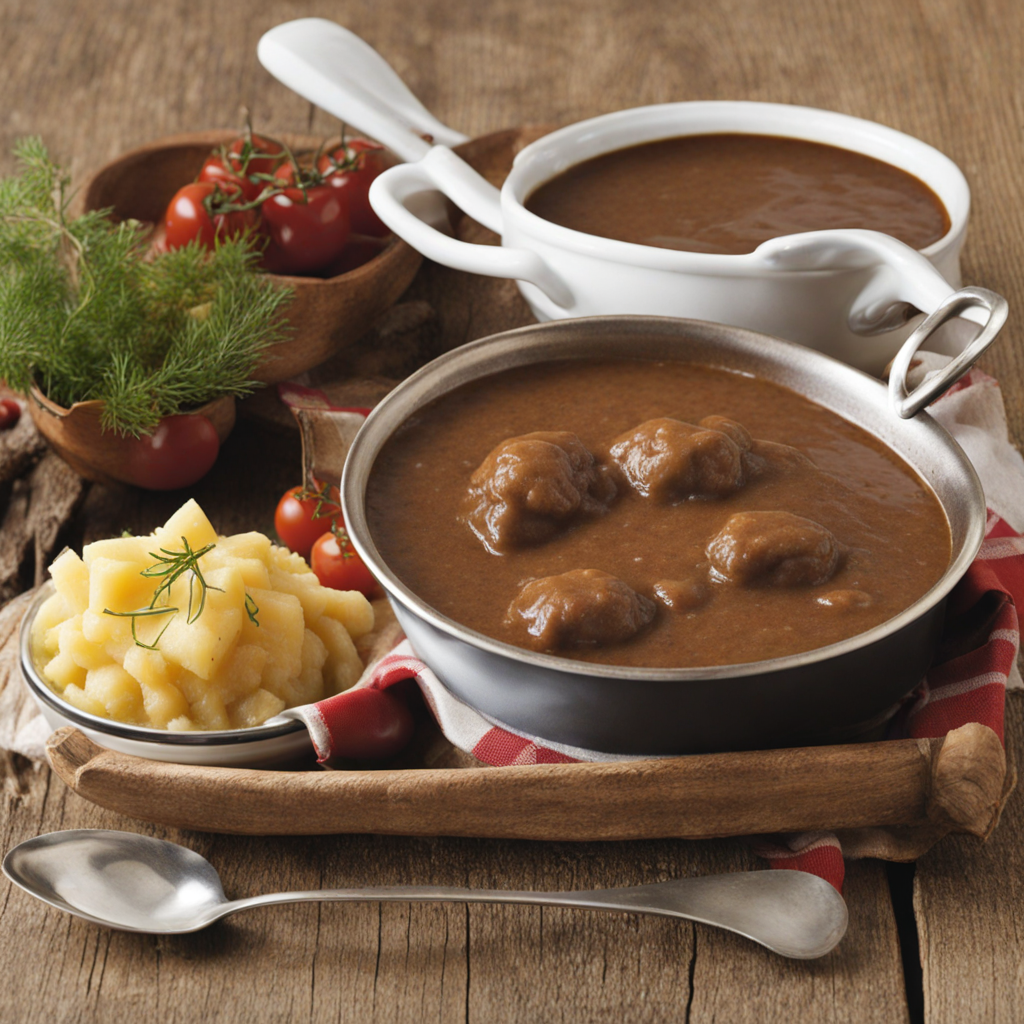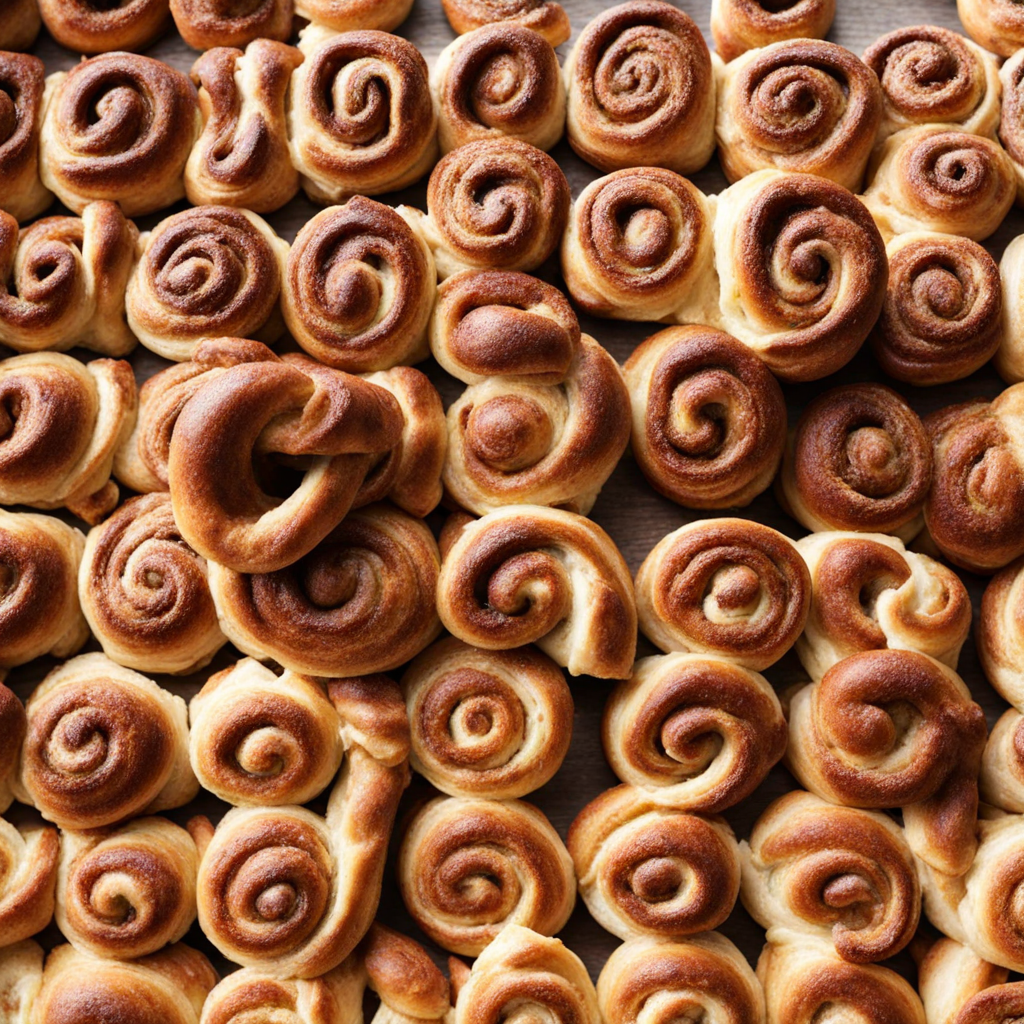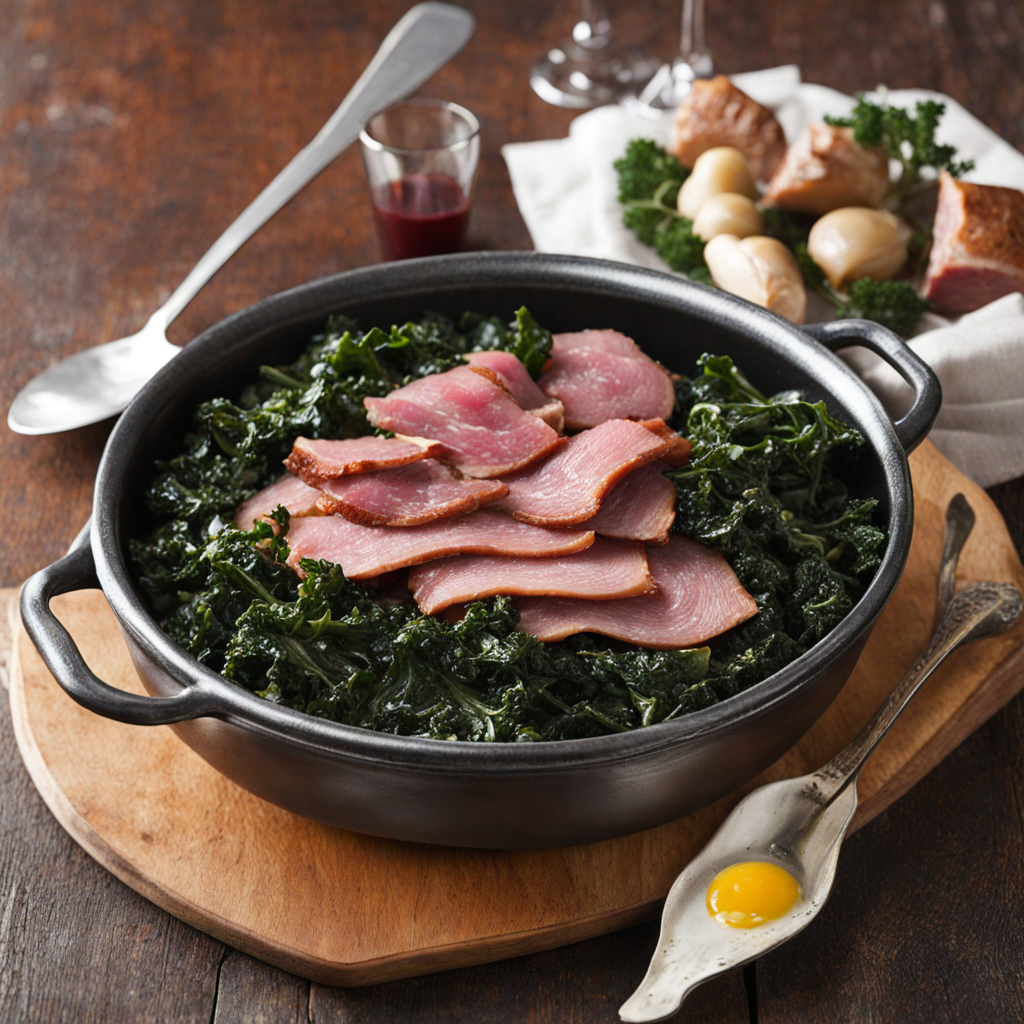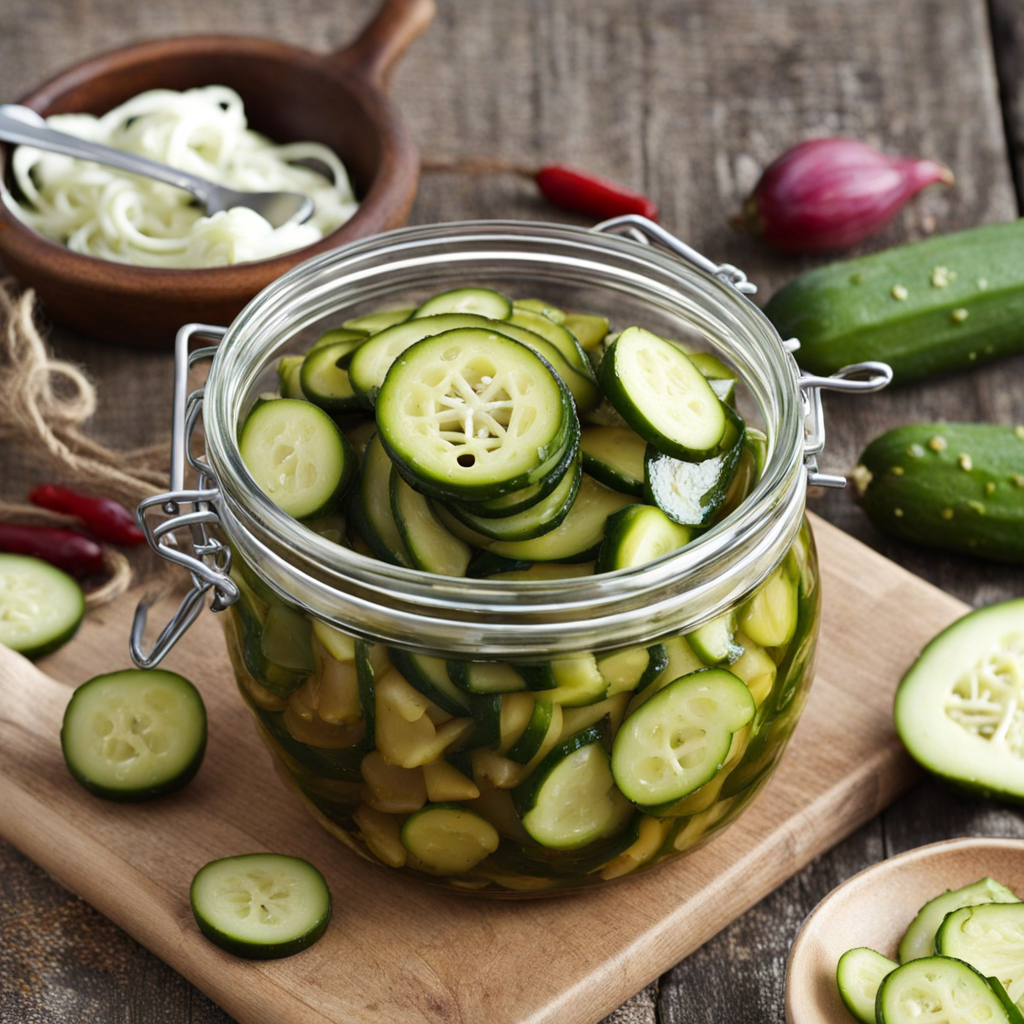Drømmekage
Drømmekage, often referred to as "dream cake," is a delightful Danish treat that embodies the perfect balance of flavor and texture. This moist vanilla sponge cake serves as the foundation, imbued with a subtle sweetness that complements its fluffy, airy structure. The cake is typically baked in a rectangular shape, making it easy to slice into generous portions, ideal for sharing with friends and family during coffee breaks or special occasions. The simplicity of the sponge, made from basic ingredients like flour, sugar, eggs, and butter, allows the cake to shine with its uniquely comforting taste. What truly sets Drømmekage apart is its heavenly topping, which is a rich coconut and caramel mixture that transforms this dessert into a decadent delight. As the cake bakes, the topping is prepared by combining butter, brown sugar, and shredded coconut, often enhanced with a touch of milk to create a creamy, luscious texture. Once the cake is out of the oven, the warm coconut topping is generously spread over the top, allowing it to soak into the sponge while creating a slightly crunchy, golden-brown crust. This delightful contrast of textures—soft cake with a crispy, caramelized topping—creates an irresistible combination that keeps you coming back for more. The aroma of Drømmekage wafting through a Danish kitchen evokes a sense of nostalgia and warmth, making it a beloved staple in many households. Each bite delivers a burst of sweet, buttery flavors paired with the tropical notes of coconut, making it an ideal treat for both casual gatherings and festive celebrations. Its popularity transcends generations, and while you might enjoy it with a cup of coffee or tea, Drømmekage can also be savored as a standalone dessert, appealing to anyone looking to explore new culinary delights from Denmark.
How It Became This Dish
The Enigmatic Drømmekage: A Sweet Slice of Danish Heritage Drømmekage, which translates to “dream cake” in Danish, is a beloved pastry that embodies the warmth and simplicity of Danish home baking. Its origins, cultural significance, and evolution over time tell a story of culinary innovation and national pride, weaving the cake into the fabric of Denmark’s rich culinary tapestry. #### Origins and Historical Context The origins of Drømmekage can be traced back to the mid-20th century, specifically around the 1960s. At this time, Denmark was undergoing significant changes, marked by a post-war economic boom that altered the lifestyle and food culture of many Danes. The need for quick, affordable, and delicious desserts became increasingly prominent, as families sought ways to celebrate everyday life with sweet treats. The cake is believed to have been popularized by a Danish television program, which featured it as a simple yet delightful recipe that could be easily replicated at home. This accessibility played a crucial role in its rise to fame. The cake's unique combination of a light sponge base topped with a rich coconut and brown sugar frosting resonated with the Danish penchant for comfort food. The frosting, with its caramel-like sweetness and chewy texture, provided a new twist on traditional cakes, capturing the hearts and palates of many. #### The Recipe: A Synthesis of Flavors The basic structure of Drømmekage includes a soft, airy sponge made from flour, sugar, eggs, and butter, typically flavored with vanilla or almond extract. What truly sets it apart, however, is the topping, which consists of a blend of brown sugar, butter, cream, and desiccated coconut. This topping is spread over the cake and baked until it forms a luscious, gooey crust that contrasts beautifully with the cake's light texture. The use of coconut in Drømmekage is particularly interesting. While coconut is not a native ingredient to Denmark, its inclusion reflects the broader trend in European baking of the time, where exotic ingredients began to influence local recipes. The rise of globalization post-World War II allowed for the importation of ingredients like coconut, which quickly found its way into the hearts—and kitchens—of the Danish people. #### Cultural Significance Drømmekage has transcended its status as merely a dessert; it has become a symbol of Danish hospitality and tradition. In Denmark, it is not uncommon to find Drømmekage served at birthday parties, special occasions, and family gatherings. Its simplicity makes it an ideal cake for celebrations, embodying a sense of comfort and home. The cake also holds a place in Danish literature and media. It is often featured in cookbooks and television shows that celebrate traditional Danish cuisine, further cementing its status as a cultural icon. Moreover, it resonates with the concept of "hygge," a Danish term that captures a feeling of coziness and contentment, often achieved through intimate gatherings and shared meals. Drømmekage, with its inviting flavors and homey appeal, perfectly encapsulates this ethos. #### Evolution and Modern Adaptations As the years have gone by, Drømmekage has evolved, reflecting contemporary tastes and dietary preferences. While the classic recipe remains a favorite, modern bakers have begun to experiment with variations that incorporate different flavors and ingredients. For instance, some have introduced chocolate into the sponge or experimented with alternative toppings like fruits or nuts, while others have created gluten-free versions to accommodate the growing demand for inclusive baking options. The cake has also gained popularity beyond Denmark’s borders, finding its way into Scandinavian bakeries and cafes worldwide. Its reputation as an approachable yet indulgent dessert has made it a sought-after item on menus, allowing more people to experience its unique flavor profile and texture. In recent years, social media platforms have played a pivotal role in popularizing Drømmekage among younger generations. Instagram and Pinterest have become hubs for sharing recipes, baking tips, and visually stunning images of the cake, inspiring a new wave of home bakers eager to try their hand at this iconic Danish treat. The vibrant images of Drømmekage, often adorned with fresh flowers or served alongside a steaming cup of coffee, capture the imagination and entice people to recreate the experience at home. #### A Cake of Community and Connection Beyond its gastronomic appeal, Drømmekage serves as a vehicle for community and connection. In Denmark, baking is often a communal activity, with families gathering to prepare traditional recipes together. Drømmekage has become a staple in these gatherings, fostering a sense of togetherness and shared heritage. The act of baking and sharing the cake creates bonds among generations, allowing the stories and traditions surrounding the recipe to be passed down. Moreover, the cake is often associated with charitable events and fundraisers, where it is sold or served to raise money for various causes. This aspect underscores the cake's role as a unifying force within the community, as it brings people together not only for enjoyment but also for altruism. #### Conclusion: A Slice of Danish Identity Drømmekage is more than just a cake; it is a symbol of Danish culture, tradition, and the evolution of culinary practices over time. Its origins in the 1960s reflect a society adapting to change, while its enduring popularity speaks to the power of food to evoke nostalgia and a sense of belonging. As Denmark continues to embrace modernity while cherishing its culinary roots, Drømmekage stands as a testament to the beauty of simplicity and the joy of sharing. In every slice, one can taste the dreams of the past and the warmth of community, making it not only a delightful treat but also a cherished piece of Danish identity. Whether enjoyed at a festive gathering or a quiet afternoon at home, Drømmekage remains a beloved staple that invites all to partake in the sweetness of life.
You may like
Discover local flavors from Denmark


